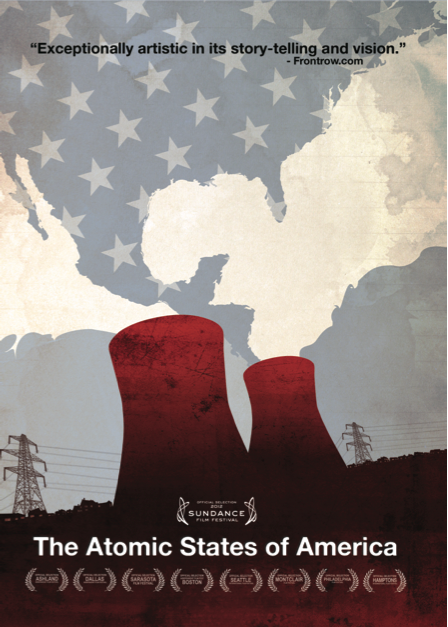Three Mile Island Alert
315 Peffer Street Harrisburg, PA 17102
NEWS RELEASE
For Immediate Release March 4, 2013
For more information:
Tickets: Kay Pickering 717-233-7897
Issues: Eric Epstein 717-541-1101
Film: Don Argott or Sheena M. Joyce
215-238-0707 http://914pictures.com

The Atomic States of America to Play in Harrisburg
The directors of a documentary that garnered rave reviews at last year’s Sundance Film Festival will bring their film to Harrisburg’s Midtown Cinema to benefit Three Mile Island Alert (TMIA) on at 6PM on Wednesday, March 27.
The Atomic States of America journeys to nuclear reactor communities around the country to provide a comprehensive exploration of the history and impact of nuclear power and to investigate the truths and myths about nuclear energy. The film introduces people who have been on the front lines of this issue for decades, including community advocates, journalists, physicists, nuclear engineers, NRC inspectors, and former government officials. Prominently featured is TMIA’s Eric Epstein, who shares insights about the industry gained over his decades of activism.
Co-directors Don Argott and Sheena M. Joyce will be on hand to answer questions about the film.
The event at the Midtown Cinema starts with a wine and cheese reception at 6PM, followed by the showing of the film at 6:30, and concludes with Argott, Joyce, and Epstein fielding questions from the audience. Tickets are $10 each and available from TMIA.
WHAT: Showing of the film The Atomic States of America to benefit Three Mile Island Alert
WHEN: 6:00PM, Wednesday, March 27, 2013
WHERE: Midtown Cinema, 250 Riley Street, Harrisburg
WHO: Don Argott and Sheena M. Joyce, co-directors
FOR TICKETS: Kay Pickering at 717-233-7897
Or purchase online at www.TMIA.com
Tickets also on sale at Transit News at the Harrisburg Transportation Center
Download Release Information
Download Poster




























